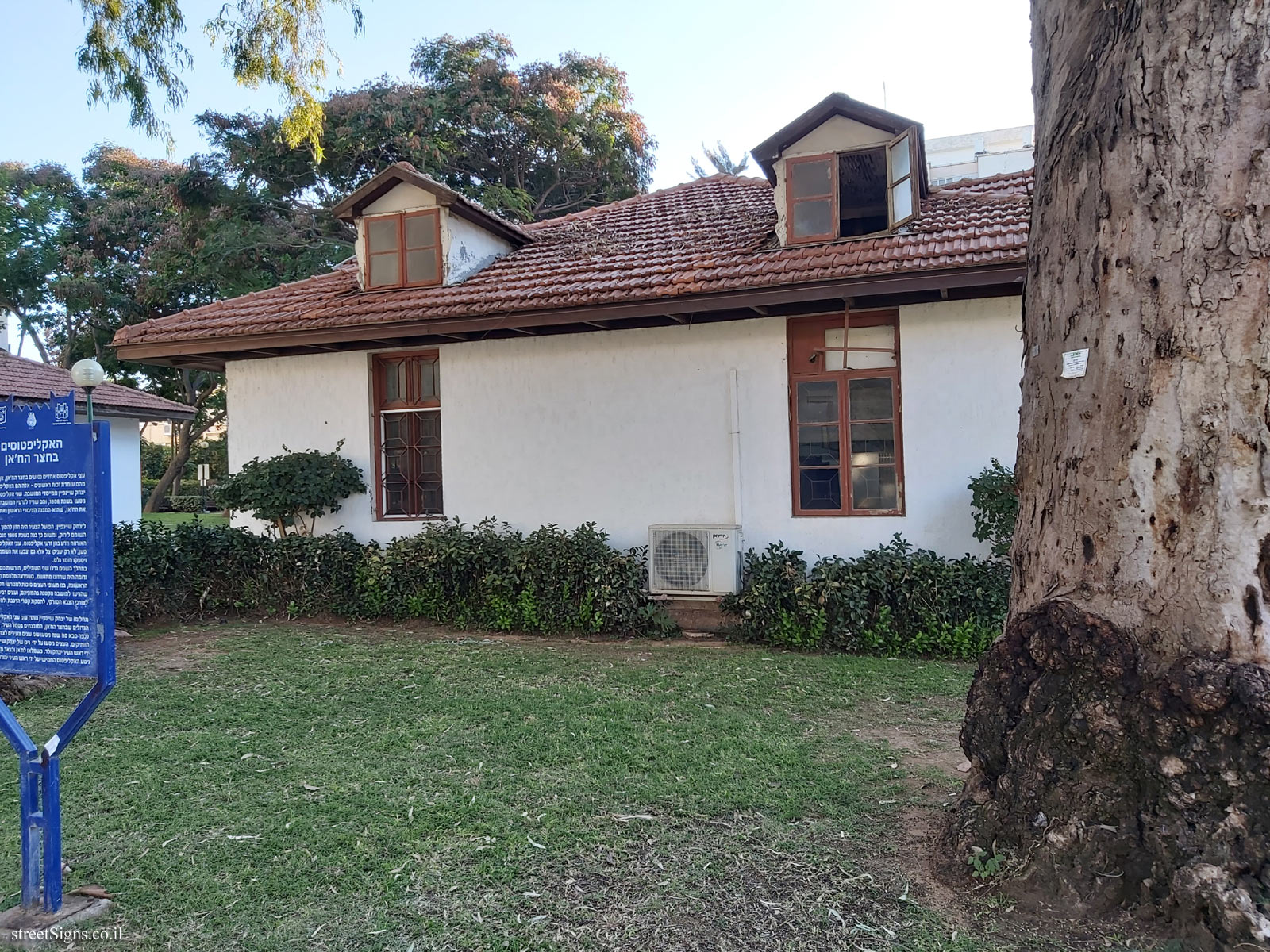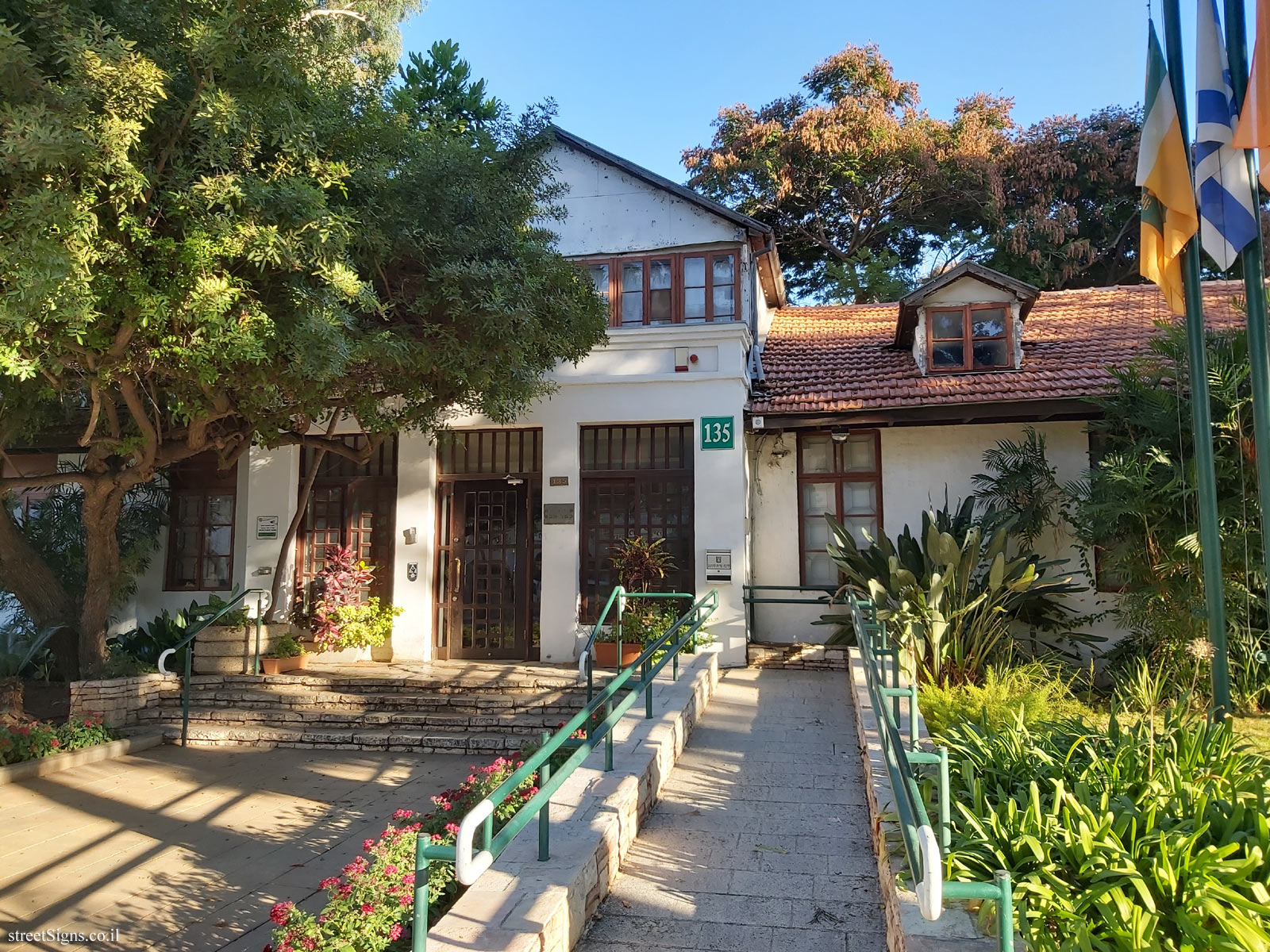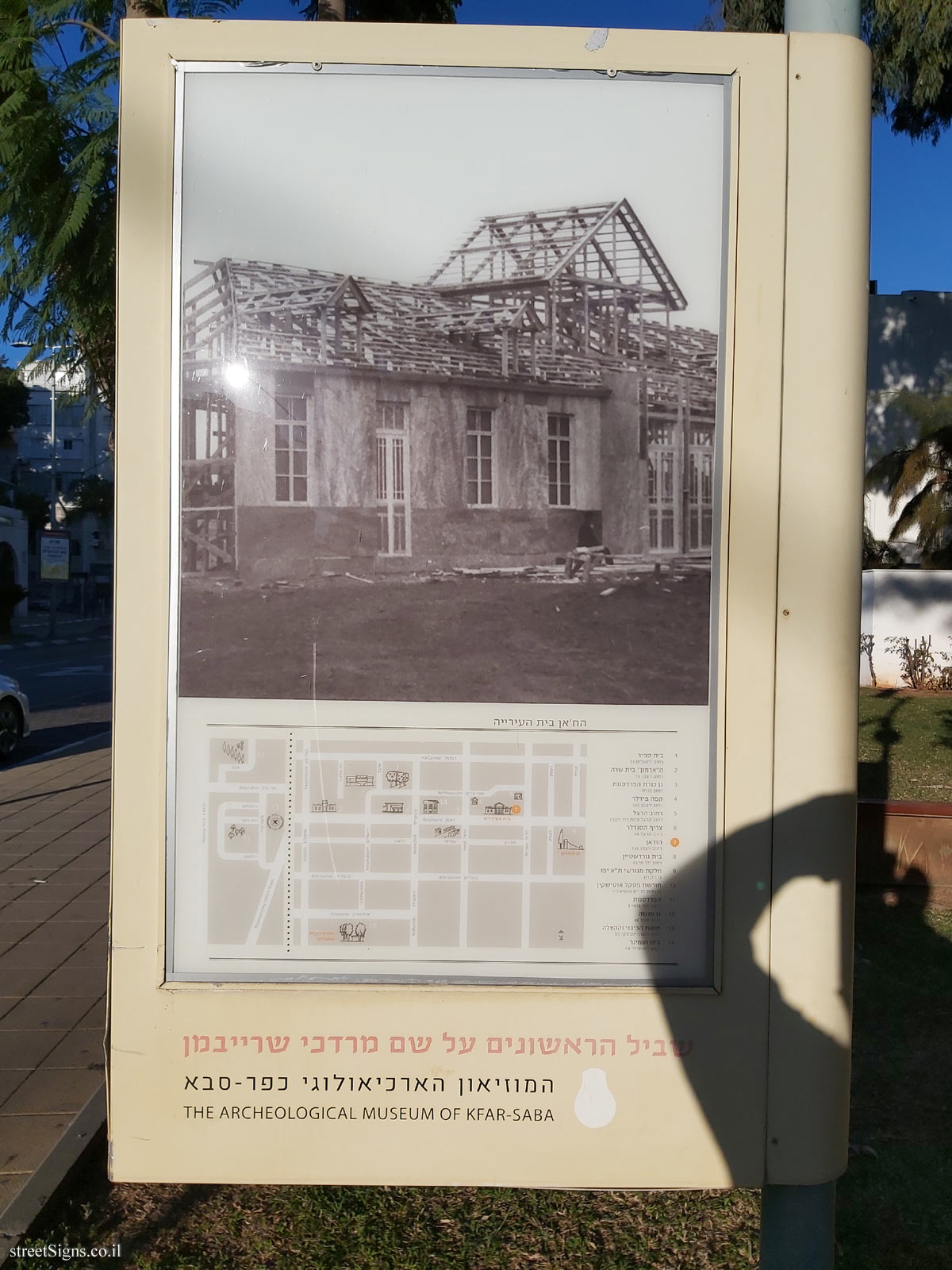The sign shape is square but its head is designed according to the silhouette of the old building of the Gymnasia Herzliya, which serves as a logo of the Council for the Preservation of Heritage Sites in Israel
The next photos taken that day show the Khan
 Click for a larger image
Click for a larger image  Click for a larger image
Click for a larger image The building is also marked as a station in The Founders’ Path of Kfar Saba
 Click for sign's details Translation of the text on the sign
Click for sign's details Translation of the text on the sign:
Symbol of the Council for the Preservation of Israeli Heritage Sites
Kfar Saba city emblem
Municipality of Kfar Saba
The Khan
In 1894 Noah Karlinsky began purchasing the lands of Kfar Saba. In 1900, the land was sold to YAC and Baron Rothschild, and in 1903 plots were sold - plots to Petah Tikva farmers, residents of Jerusalem and other immigrants.
With the money received by the YAC for the land, a well 18 inches deep was excavated and the public house - the "Khan" was built.
The house was built in 1906 by the Colony Committee, in response to the demand of the workers who came from Petah Tikva to work in Kfar Saba and who had until then lived in a dilapidated wooden hut, without a nearby water source.
The newly erected stone building had five rooms. Two for people and three for animals, one of the living rooms was given to the workers, while the other was occupied by the family who cared for them.
At the well, which was excavated near the house, a trough for watering the animals was erected and around it were planted eucalyptus.
In 1923, the "Khan" became a committee house, as the first public building in Kfar Saba, the house also served as a school, as a mikveh, a library, a shoemaker’s office, the Haganah headquarters and even as a local council house, declared in 1939.
In 1962, Kfar Saba was declared a city.

 Click for a larger image
Click for a larger image  Click for a larger image
Click for a larger image  Click for sign's details
Click for sign's details